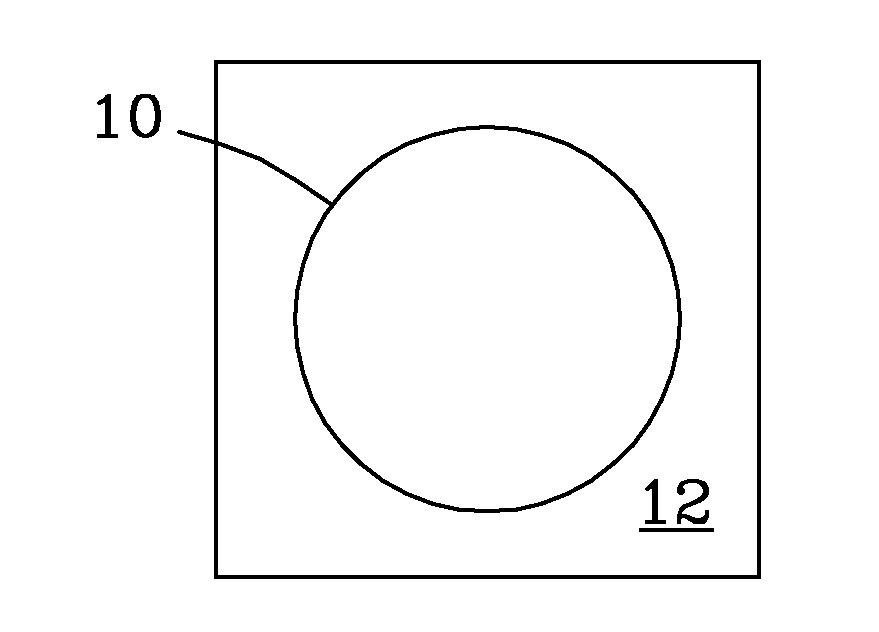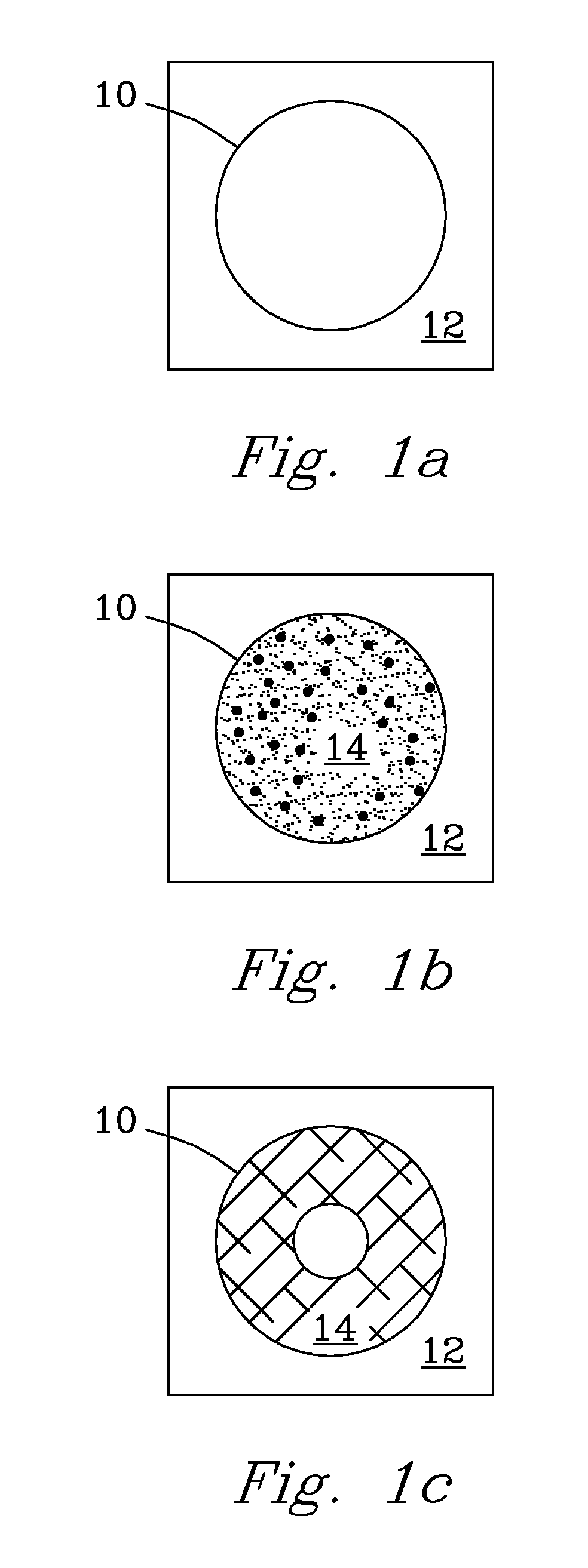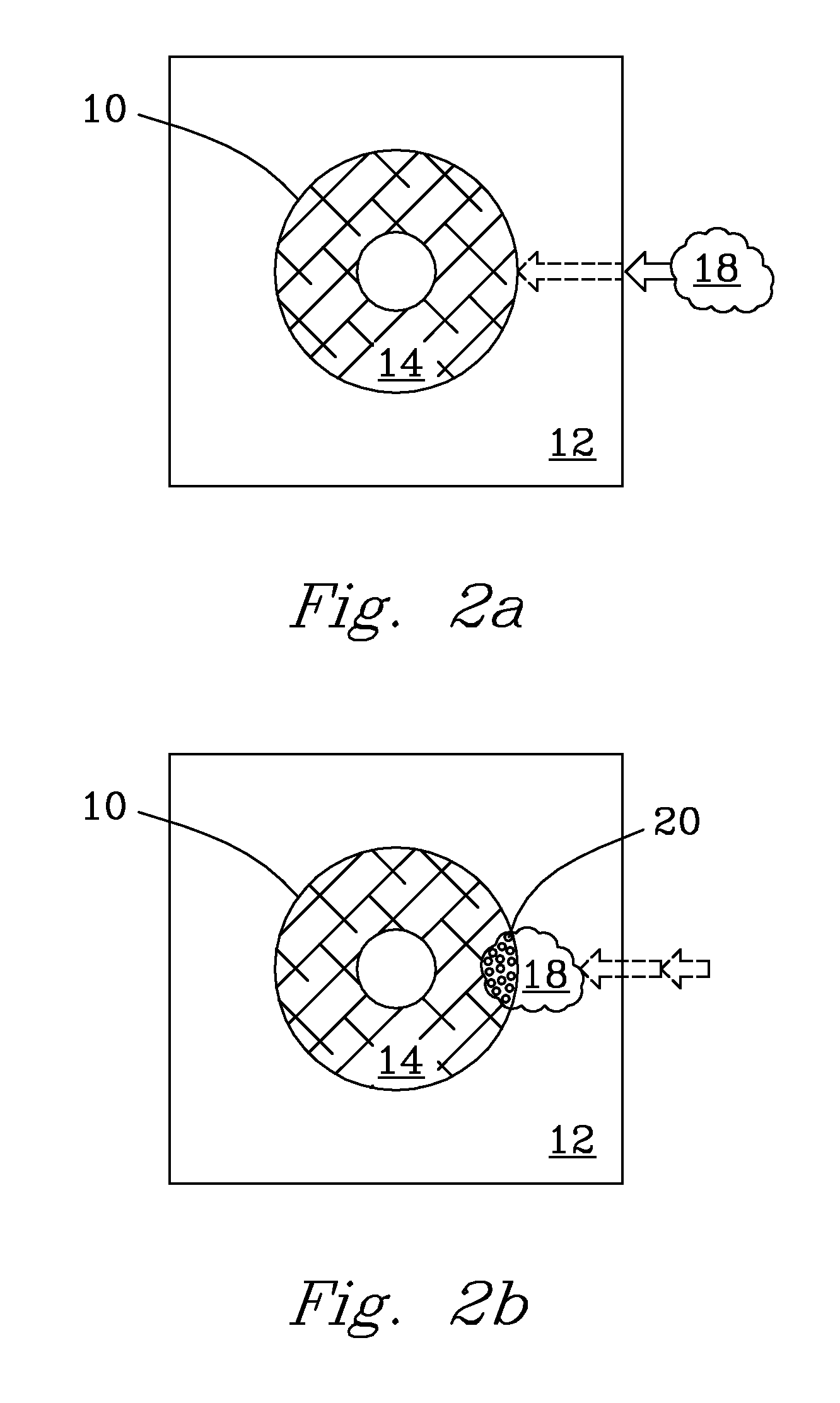Method and Composition for Protection of Refractory Materials in Aggressive Environments
a technology for refractory materials and aggressive environments, applied in the field of refractory materials, can solve the problems of reducing the ability of slag to penetrate (or further penetrate) the refractory, causing the refractory to spall, etc., and achieves the effects of reducing the ability of slag to penetrate the refractory, reducing the viscosity of the slag, and minimizing the spalling of the refractory material
- Summary
- Abstract
- Description
- Claims
- Application Information
AI Technical Summary
Benefits of technology
Problems solved by technology
Method used
Image
Examples
example 1
Refractory Protection
(Leucite Sol-Gel Method #1)
[0031]A 250 mL beaker was heated to 90° C. in a silicone oil bath on a hot plate. 50 mL of deionized water was poured into the heated beaker. After ˜1 min, 32.8 mL of a LUDOX® SM-30 colloidal silica suspension (30 wt % suspension in water, ρ=1.22 g / cm3, Sigma-Aldrich, St. Louis, Mo., USA) was added into the 50 mLs deionized water and mixed for 1 minute with a platinum mixer (˜150 rpm). Then, 13 mL of KAlO2 solution (49 wt % solids, ρ=1.54 g / cm3, Sigma-Aldrich, St. Louis, Mo., USA) was slowly added during continuous mixing. Mixture was stirred for ˜1 min to form the sol-gel mixture. A 90 g coupon of Serv-95® refractory (˜3.5 cm square and ˜1.5 cm thick) was introduced into the sol-gel mixture and placed into a dessicator. In-house vacuum (−27 in. of Hg) was then applied to impregnate the refractory coupon. The refractory coupon was allowed to soak in the sol-gel mixture under vacuum until no bubbles were observed coming from the refract...
example 2
Refractory Protection
(Leucite Sol-Gel Method #2)
[0032]A sol-gel mixture was prepared as in Example 1. A 90 g coupon of Serv-95® refractory (˜3.5 cm square and ˜1.5 cm thick) was introduced into the sol-gel mixture and placed into a pressurized vessel. A pressure of ˜35 psi was applied to impregnate the refractory coupon (˜20 min). After impregnation, the refractory coupon was removed from the gel, excess gel on the surface of the refractory was removed, and the refractory coupon was placed in an oven and dried overnight at a temperature of 105° C. The impregnated and dried refractory was then heated at a temperature of 1100° C. for 1 hr to densify the impregnation material in the refractory.
example 3
Refractory Protection
(Muilite Sol-Gel Method #1)
[0033]Aluminum hydroxide was completely precipitated from a >98 wt % aluminium-nitrate nonahydrate solution by adding ammonium hydroxide. The solution was filtered and precipitate was washed several times with water. Precipitated aluminum hydroxide was then dissolved in an aqueous oxalic-acid solution using excess oxalic acid (>99.5 wt %) (1:2 molar ratio) by warming in a water bath at 100° C. to obtain a clear aluminum oxalate solution. The aluminum oxalate solution was then dried to obtain a solid aluminum oxalate precursor. Next, 50.8231 g of solid aluminum oxalate precursor was dissolved in 80 mL of deionized water and heated in a 250 mL beaker in a silicone oil bath at 70° C. and stirred ˜1 min using a platinum mixer. 10 mL of >98 wt % tetraethoxysilane (TEOS) (ρ=0.933 g / cm3) (Fluke, St. Louis, Mo., USA) was added and the solution was then mixed for ˜30 min to form the sol-gel mixture. Impregnation and densification of the refract...
PUM
| Property | Measurement | Unit |
|---|---|---|
| Temperature | aaaaa | aaaaa |
| Temperature | aaaaa | aaaaa |
| Temperature | aaaaa | aaaaa |
Abstract
Description
Claims
Application Information
 Login to View More
Login to View More - R&D
- Intellectual Property
- Life Sciences
- Materials
- Tech Scout
- Unparalleled Data Quality
- Higher Quality Content
- 60% Fewer Hallucinations
Browse by: Latest US Patents, China's latest patents, Technical Efficacy Thesaurus, Application Domain, Technology Topic, Popular Technical Reports.
© 2025 PatSnap. All rights reserved.Legal|Privacy policy|Modern Slavery Act Transparency Statement|Sitemap|About US| Contact US: help@patsnap.com



